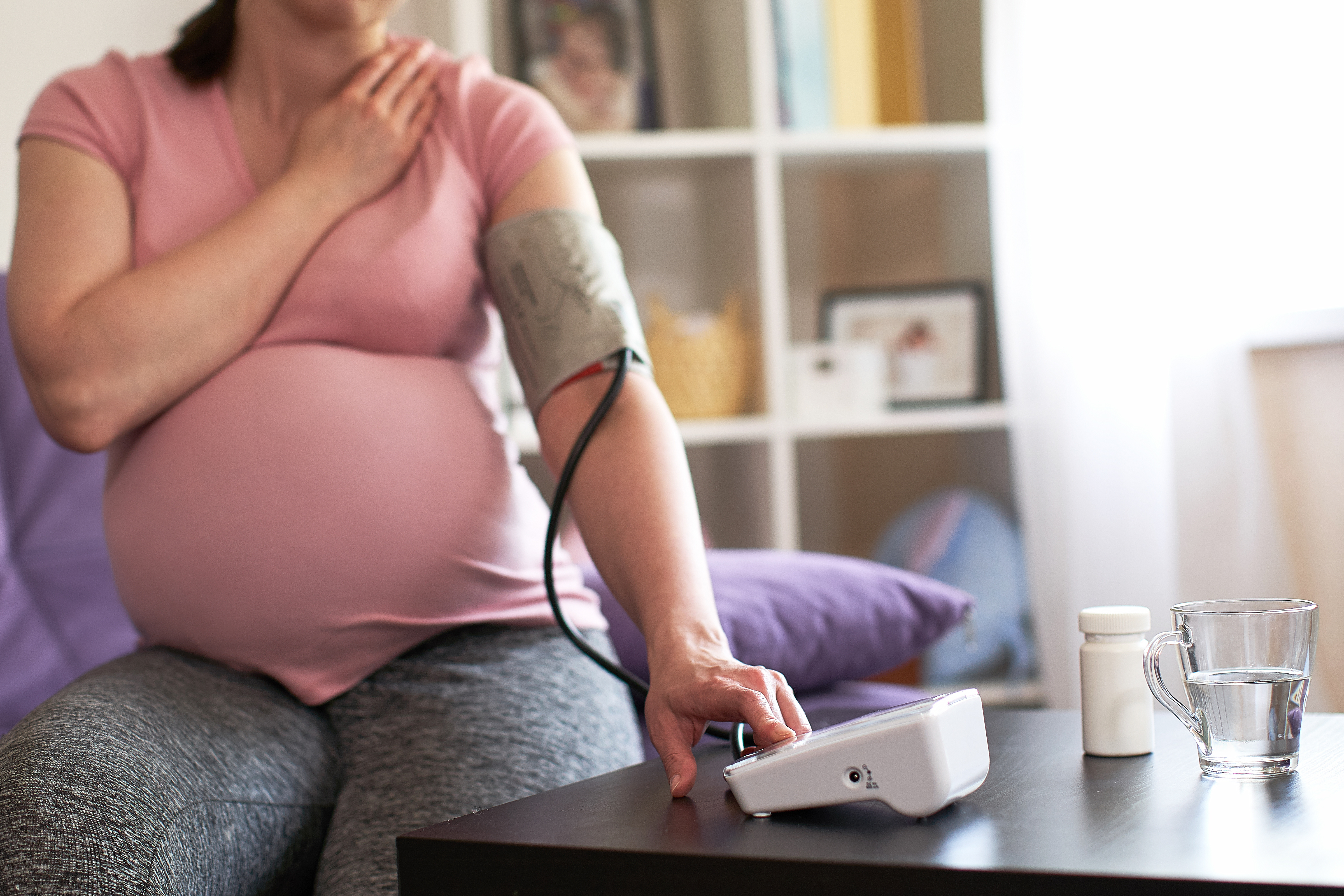Preeclampsia affects 4% of pregnancies in the United States and approximately 2 to 8 percent of pregnancies globally. Preeclampsia typically occurs during the second or third trimester of pregnancy and can cause liver and kidney damage as a result of abnormally high blood pressure. The sudden or gradual increase in blood pressure develops when the blood vessels that deliver nutrients to the placenta branch abnormally because they do not react normally with signals through the blood or are too narrow. Severe preeclampsia can cause seizures called eclampsia, and doctors may recommend labor induction. Given the seriousness, screenings play a vital role in protecting mothers and their babies.
Currently, careful attention to the medical records of the mother and regular blood pressure checks are the most common way of diagnosing preeclampsia. The UK follows screening rules instructed by the National Institute for Health and Care Excellence (NICE), which records factors that are associated with preeclampsia, including the pregnant woman’s age, family history, BMI, number of pregnancies, and past diagnosis of diseases related to the circulatory system or kidneys. A valuable test used to determine preeclampsia diagnosis is to test for proteinuria, excess protein in the urine, using a 24-hour urine collection test. Although these methods are useful, they can be costly and require lots of time. These high costs are most detrimental to low-middle-income countries where preeclampsia causes higher rates of premature birth. More cost-effective methods of screening for preeclampsia are especially important in developing countries because, according to the World Health Organization (WHO) in a 2011 study, the prevalence of preeclampsia in developing countries is seven times higher than in developed countries. Many current detection methods cannot be easily implemented in developing countries because of a lack of resources and access to care; thus, the search for more convenient and accurate screening methods is crucial.
Routine blood pressure checks are important to screen for preeclampsia.
Image Source: JGI/Tom Grill
Researchers are eager to study preeclampsia and find new methods for detecting preeclampsia as uncertainties remain about the genetic causes of preeclampsia. One of these methods is Raman spectroscopy, where light hits a sample, and the resulting scattering of the light reveals information about the specific vibrational frequencies of molecules, which is then used to determine the molecules that form the biological structure. This method has proved more convenient because it uses serum and plasma body fluids to test for biomarkers like low amino acid count and excess lipids t0 predict preeclampsia. Therefore, testing bodily fluids through blood tests using Raman spectroscopy can be less time-consuming compared to the 24-hr urine collection test used to check for proteinuria, and some preliminary studies show that Raman spectroscopy is highly accurate in predicting preeclampsia.
As research continues surrounding the use of Raman spectroscopy to determine predisposition to preeclampsia, researchers are trying to ensure that this new method is a better early predictor of preeclampsia and less costly to patients and healthcare facilities in low-income areas and developing countries.
Featured Image Source: skif










